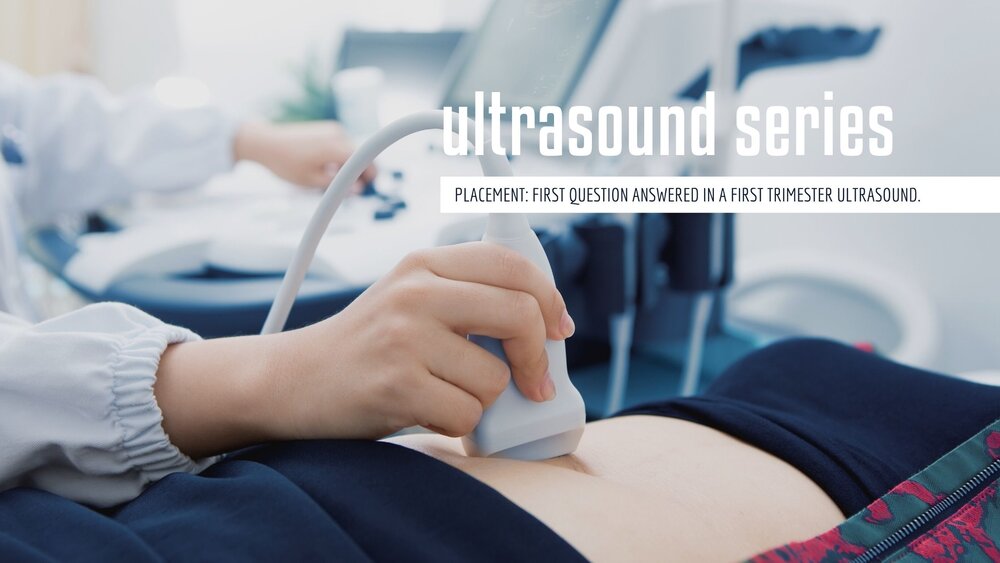Ultrasound Series: Part 2 – Placement
Hi, it’s Tresa again with the next installment of the ultrasound series. Just to remind everyone, there are 3 questions that I will find the answer to when I perform an ultrasound. They are:
The next three blogs will be focusing on one of the above questions.
Today, we will discuss the importance of verifying that the pregnancy is located in the fundus (top half) of the uterus. If it is anywhere else, it could be what is known as an ectopic pregnancy. According to ACOG (the American College of Obstetricians and Gynecologists) “An ectopic pregnancy occurs when a fertilized egg grows outside the uterus. Almost all ectopic pregnancies – more than 90% – occur in the fallopian tube. As the pregnancy grows, it can cause the tube to burst (rupture). A ruptured tube can cause major internal bleeding. This can be a life-threatening emergency that needs immediate surgery.”

“While ectopic pregnancies account for only 1.3–2.4% of all pregnancies, they are the leading cause of first-trimester maternal pregnancy-related mortality and account for 10% of maternal pregnancy-related deaths. Most ectopic pregnancies are diagnosed between 6-9 weeks of gestation when the patient becomes symptomatic. They often present with complaints of vaginal bleeding, pelvic pain, and occasionally syncope.”1. If an ectopic pregnancy would be identified during an ultrasound, the patient would be referred for immediate medical attention.
Every ultrasound that I perform begins with an abdominal scan. In a woman’s body, the bladder is in front of the uterus. The sound waves from the ultrasound have to go through the bladder to reach the uterus. Sound waves pass through fluids. The bladder (and hence the uterus) is much easier to visualize if the bladder is full. This is why the patient is requested to drink 16 ounces of water one hour prior to her ultrasound appointment.
The parts of the female anatomy that are identified during an abdominal ultrasound are the bladder, the uterus, (including the fundus and cervix), the vagina, the pregnancy, the fallopian tubes, and ovaries. Our medical director requires the ultrasound scan to visualize the pregnancy in the fundus of the uterus connected to the cervix connected to the vagina. In this way, she is able to determine that the pregnancy is in the correct location.
In all of my first trimester pregnancies, this anatomical view is repeated with a transvaginal scan. The transvaginal scan is able to visualize the pelvic structures more clearly because the transducer (ultrasound probe) is positioned beside the cervix of the uterus. This approach gives the sonographer a more direct view of the uterus and hence the pregnancy.
After the location of the pregnancy is confirmed, the next question to be answered is, “Is there a heartbeat?” This question will be reviewed in next month’s blog.